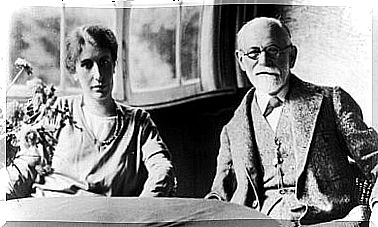Holistic Psychology For Understanding Behavior

Holism in psychology is a term that suggests that people are much more than the sum of their parts. Holistic psychology focuses on observing how all the different parts of an individual work together without dividing them into specific processes.
To understand what makes people think or behave in a certain way, holistic psychology believes in studying individuals in their entirety instead of just one side.
Many factors that constantly interact with each other ultimately affect who you are and what you do. This broad picture is what holism studies to try to understand a case or a problem.
You can find a very clear example in the brain. Everyone knows that the brain contains millions of neurons. However, to understand what the brain can do as a whole, it is useless to study individual nerve cells.

To use holistic psychology
When a psychologist analyzes how different factors interact and influence the individual’s behavior and emotional state, they use holistic psychology. In that sense, the elements they assess vary with each patient.
Some of them include the individual’s home, the people they live with, their professional and educational background, their social conditions, how they behave in groups, their health and their perception of well-being and stress. You can thus see that patient evaluation is much more than just studying their symptoms.
The benefits of this approach
An approach in holistic psychology is one of the most effective treatment options. There is a greater chance of finding the cause of the problem since it includes many elements in the evaluation.
Holistic psychology is also effective in finding more accurate and potentially better solutions. Although this approach takes more time, it is a small price to pay to be able to offer more significant and relevant interventions that lead to long-term changes.
When you study an individual in a holistic way, you better understand the aspects that affect how they feel mentally, physically and socially. It’s like trying to see a photograph that is only a few inches from your nose. Although you may only be able to focus on a small part of it, you may not understand what you are seeing until you take a step back and look at the whole picture. Holistic psychology aims to treat the whole patient, and the only way to do that is to understand who they are.
Disadvantages of holistic psychology
As with all special focus areas, this also has its drawbacks. Some problems require a very specific focus to find a solution.
This approach can make that kind of accuracy very difficult, especially when it comes to research. Studies need very defined variables, which is why holistic psychology does not always fit in with the scientific method.
Holism in psychology is complicated. It is a challenge to design evaluations and interventions that fit into this approach. Therefore, many psychologists simply cannot use it in their clinical work.

Holistic philosophy
Different philosophies have adopted a holistic approach throughout the history of psychology. Among these is Gestalt Psychology, which argues that human behavior should be observed as a whole.
Humanistic psychology is another holistic philosophy. In fact, it appeared in response to the reductionism of the psychoanalytic and behaviorist philosophies. Social psychology also uses a holistic approach because it takes into account environmental, social, emotional and group dynamics.
Holistic psychology is very attractive because it often finds solutions that other more reductionist approaches do not find. It evaluates the impact of a person’s past, how they live now and how they will cope with the future.









